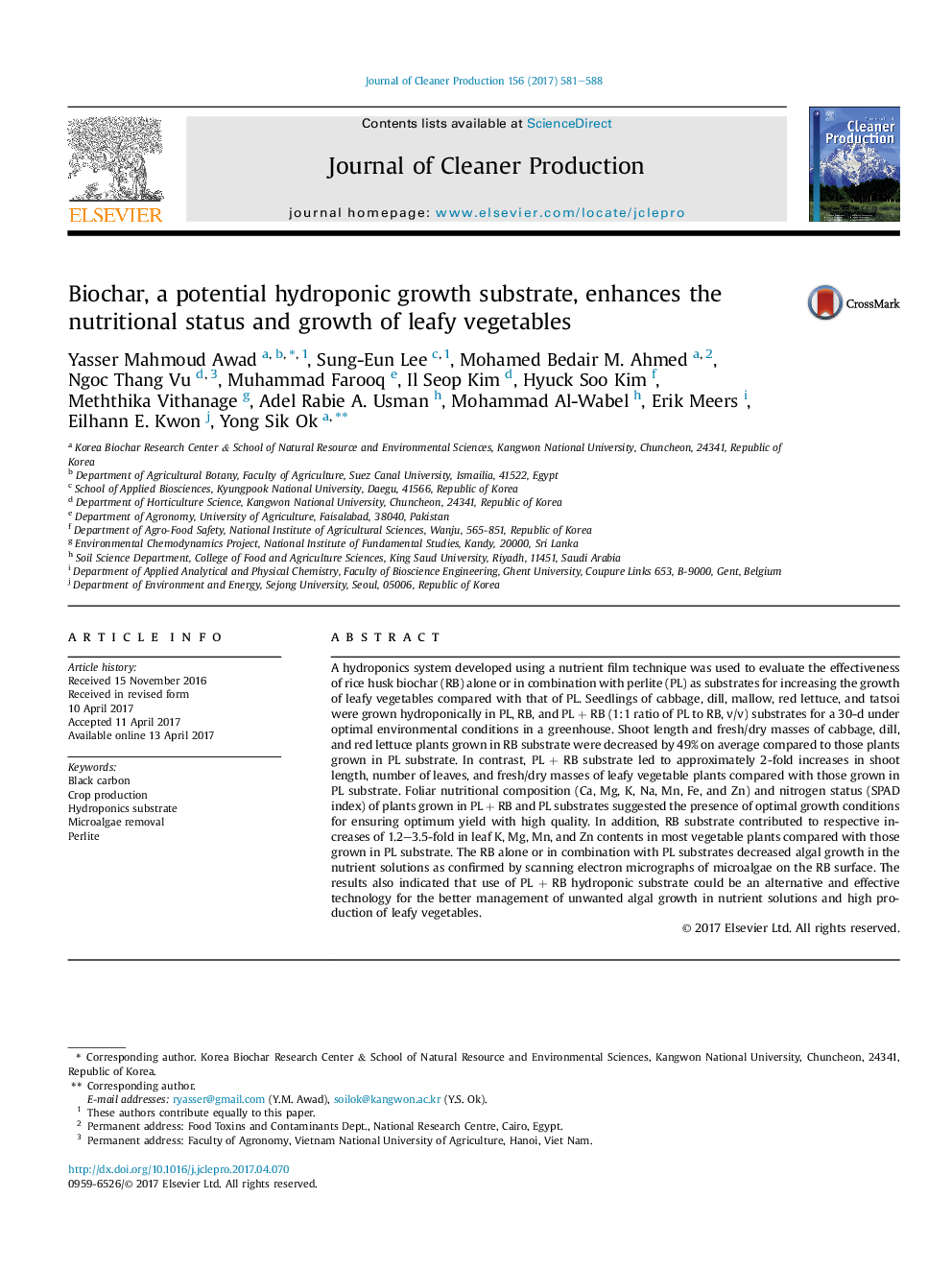| Article ID | Journal | Published Year | Pages | File Type |
|---|---|---|---|---|
| 5481014 | Journal of Cleaner Production | 2017 | 8 Pages |
Abstract
A hydroponics system developed using a nutrient film technique was used to evaluate the effectiveness of rice husk biochar (RB) alone or in combination with perlite (PL) as substrates for increasing the growth of leafy vegetables compared with that of PL. Seedlings of cabbage, dill, mallow, red lettuce, and tatsoi were grown hydroponically in PL, RB, and PLÂ +Â RB (1:1 ratio of PL to RB, v/v) substrates for a 30-d under optimal environmental conditions in a greenhouse. Shoot length and fresh/dry masses of cabbage, dill, and red lettuce plants grown in RB substrate were decreased by 49% on average compared to those plants grown in PL substrate. In contrast, PLÂ +Â RB substrate led to approximately 2-fold increases in shoot length, number of leaves, and fresh/dry masses of leafy vegetable plants compared with those grown in PL substrate. Foliar nutritional composition (Ca, Mg, K, Na, Mn, Fe, and Zn) and nitrogen status (SPAD index) of plants grown in PLÂ +Â RB and PL substrates suggested the presence of optimal growth conditions for ensuring optimum yield with high quality. In addition, RB substrate contributed to respective increases of 1.2-3.5-fold in leaf K, Mg, Mn, and Zn contents in most vegetable plants compared with those grown in PL substrate. The RB alone or in combination with PL substrates decreased algal growth in the nutrient solutions as confirmed by scanning electron micrographs of microalgae on the RB surface. The results also indicated that use of PLÂ +Â RB hydroponic substrate could be an alternative and effective technology for the better management of unwanted algal growth in nutrient solutions and high production of leafy vegetables.
Related Topics
Physical Sciences and Engineering
Energy
Renewable Energy, Sustainability and the Environment
Authors
Yasser Mahmoud Awad, Sung-Eun Lee, Mohamed Bedair M. Ahmed, Ngoc Thang Vu, Muhammad Farooq, Il Seop Kim, Hyuck Soo Kim, Meththika Vithanage, Adel Rabie A. Usman, Mohammad Al-Wabel, Erik Meers, Eilhann E. Kwon, Yong Sik Ok,
